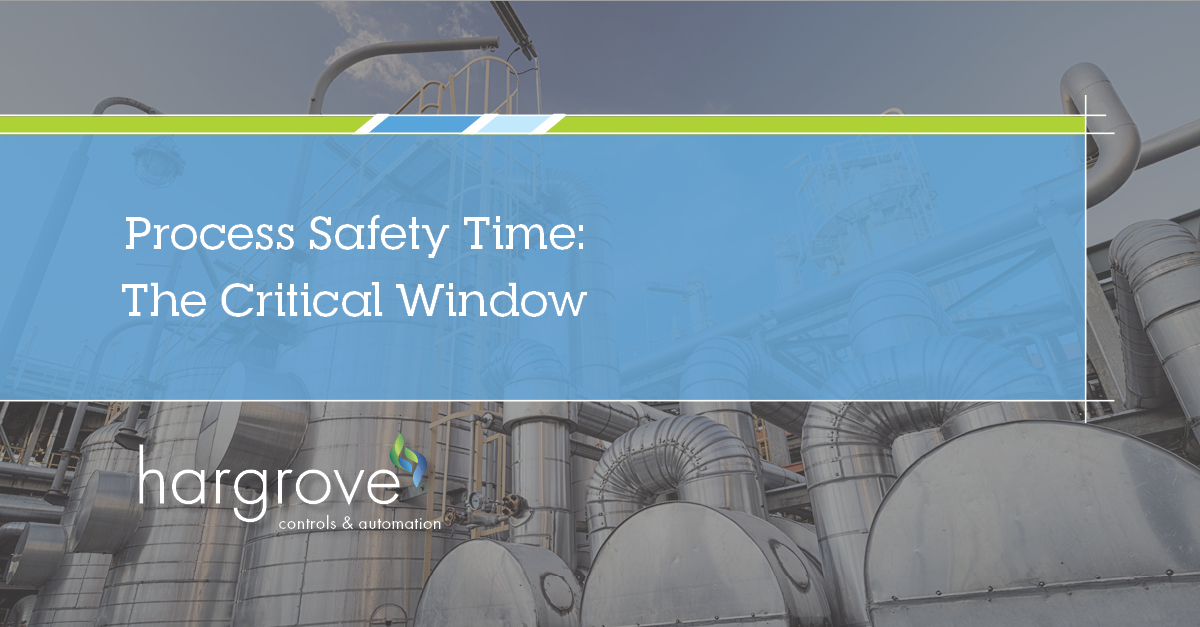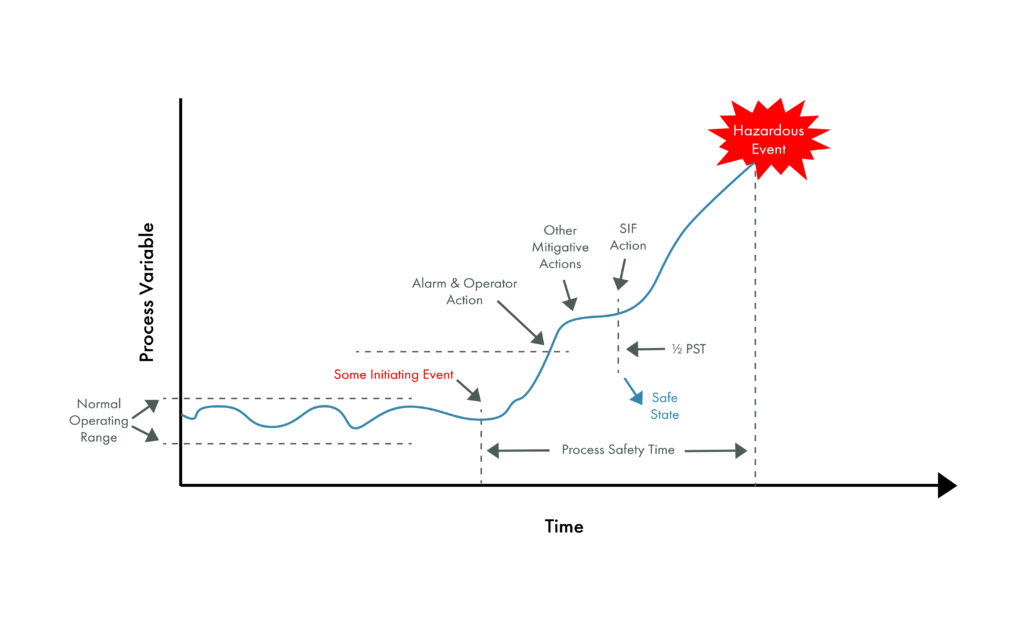Process Safety Time: The Critical Window

By Chet S. Barton, P.E., FS Expert | C&A Process Safety Industry Leader
Understanding the Role of Process Safety Time in Preventing Hazardous Events and Accurately Designing Safety Systems
Skydiving with a parachute is an obvious safety measure. However, the parachute cannot be deployed just before hitting the ground; the time between exiting the plane and needing to pull the parachute is a critical calculation. The time window makes the difference between a safe landing and an unsafe impact.
Just as timing is crucial in skydiving, the concept of timing plays an equally critical role in process safety. In process safety, the period between the loss of control over a system and the occurrence of a hazardous event is known as process safety time. Understanding this window is essential for implementing effective safety measures to mitigate risks and prevent severe consequences.
Process Safety Time: A Margin of Safety
Process safety time (PST) refers to the interval between a triggering event—such as the process deviating outside normal operating boundaries—and the occurrence of a resulting hazardous event. Hazardous events can range from minor incidents, like water spilling onto the floor, to catastrophic ones, such as a reactor explosion. Triggering events might include part failures, system malfunctions, or other causes that lead to a loss of process control.
The window of time can vary significantly, from hours to mere seconds, depending on the system and process involved. Each potential hazard should be associated with a specific process safety time.
For example, consider a process measuring pressure inside a vessel. The pressure may fluctuate within an acceptable range, but if it increases beyond those boundaries, alarms alert the operator to act. If the operator’s response fails, additional safety mechanisms engage, such as a pressure relief valve. If these measures are ineffective, the system will attempt a final action to restore safety. Should this last effort fail, an explosion may occur. In this example, the process safety time refers to the interval between when the pressure in the vessel rises above the defined acceptable range and when the vessel explodes.
As a general rule, a system should be brought back to a safe state within about half the process safety time to provide a margin of safety. The diagram below illustrates a process operating normally until a triggering event occurs. It displays the time interval between the event and the resulting hazard. Additionally, a secondary line indicates the necessary time frame to bring the process back to a safe state, as a corrective action may not lead to an immediate return to safety. Returning to the pressure vessel example above, the excess vessel pressure needs a certain amount of time to return to a safe state and if the corrective action is not deployed in time, an explosion could still occur.

Determining Process Safety Time
Determining process safety time involves a degree of precise estimation. Overestimating process safety time could result in safety measures failing to act in time to restore the system to a safe state. Conversely, underestimating it may trigger premature safety actions, such as unnecessary system shutdowns.
Accurate estimation of process safety time depends on clearly defining parameters around the triggering event. Establishing appropriate boundaries for normal and abnormal operations is essential for determining when the process safety time begins. If these parameters are incorrect, the system may trigger unnecessary shutdowns.
Here are a few factors to help estimate the process safety time for a particular process:
- Historical Data – Look at what has happened in the past. If possible, reference similar processes outside of the facility.
- Anecdotal History – Talk to operators and use their experience. Have near misses happened at the facility?
- The Process Hazard Analysis (PHA) – The PHA defines what is the hazard and how severe it is. A chemical explosion is very different from a water spill, and that may affect how quickly the hazard must be addressed. The PHA also looks at how likely the event is to occur. The keys are the likelihood and consequence severity.
An excellent reference for determining process safety time is IEC 61511. Additionally, the American Institute of Chemical Engineers (AICHE) provides valuable resources, including references and industry examples that can aid in understanding and applying process safety time effectively.
The Essential Role of Process Safety Time
Process safety time is a crucial element in the design and engineering of a reliable safety instrumented system. Determining PST requires significant time and research, yet it is often overlooked because it is not typically addressed in a Process Hazard Analysis (PHA). Neglecting to establish this critical time frame can be as risky as deploying a parachute too late.
If you’re interested in learning how to make your facility safer and more efficient, contact the Hargrove Controls & Automation Team.

